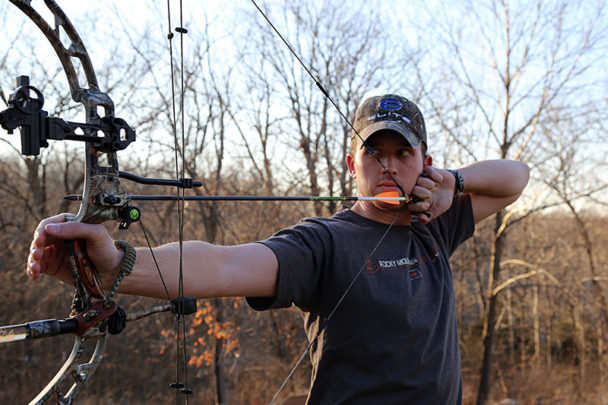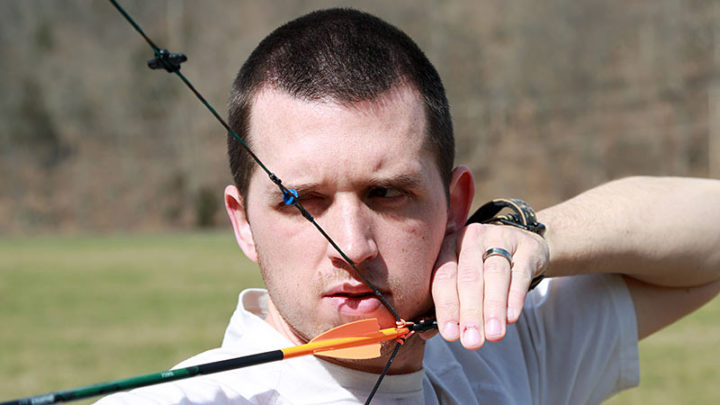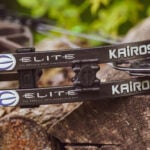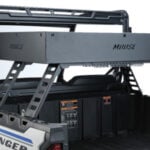The index-finger or caliper style, wrist strap release is by far the most common release aid used by bow hunters. I haven’t hunted with one in years.
Why?
Because I discovered the many benefits of a handheld, thumb-trigger release.
Don’t get me wrong, there are many great things about a typical wrist strap release: they are simple, easy to use, economical, and easy to replace or borrow if yours becomes lost or broken. And both thumb-trigger and index-finger releases share a lot in common when it comes to the basic premise of release functionality (a trigger that releases a hook/jaw, which releases the bow string).
To highlight the differences between the two styles of releases let me focus on the lesser-known, lesser-understood release and highlight why I use a thumb-trigger release these days.
Finger vs Thumb — First and Foremost
My main problem with index-finger releases has nothing to do with the release itself and has everything to do with my weak mind and my itchy trigger finger. First and foremost, I stopped shooting an index-finger release because I cannot shoot one for an extended period of time without struggling with target panic.
“Well, that’s your problem,” you might be saying. And you’re right. But it either is, or likely will become, your problem as well. Target panic comes in various forms, and there are many ways to diagnose it.
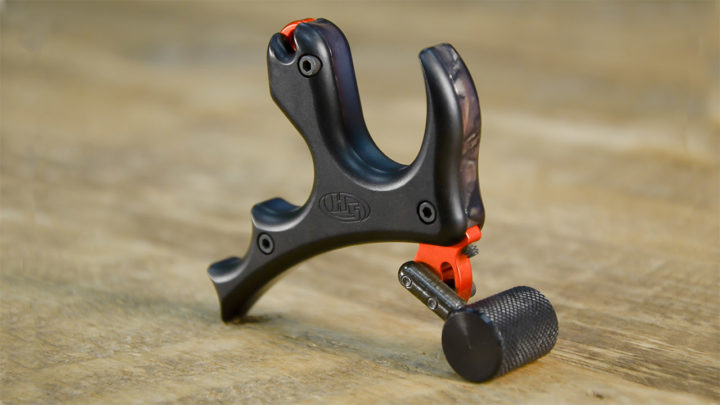
Thumb trigger releases such as the Hot Shot Vapor seen here are becoming increasingly popular with bowhunters.
For example, I used to struggle with not being able to hold dead-center on the bullseye. I was rock-steady holding just below it, but I could not get on the middle of it. That is target panic. At other times, I noticed that I could get on the center of the bullseye, but I could not comfortably keep my sight’s pin there without a strong urge to “SHOOT NOW!” That, too, is target panic.
Does A Thumb Trigger Release Cure Target Panic?
So, did all of my issues with target panic immediately disappear when I began using a thumb-trigger release? And is a thumb-trigger release the end-all, be-all cure for every person’s case of target panic?
No, and no.
A thumb-trigger release itself will not automatically cure target panic, but it will help you defeat it. Slapping, punching, jamming, or swiping at a trigger — with your index finger or with your thumb — is not the right way to execute a shot. So, it is still possible to make a bad, panicky shot by hastily slapping a trigger with your thumb.
But if you use a thumb-trigger release the right way, you’ll develop proper shot execution, understand how a shot should break, and eliminate target panic.
What is “the right way” to use a thumb trigger release?
There are a lot of details and many variables that could be covered in a small book answering this question, so let me just touch on a few key aspects:
Your thumb should not move to activate the trigger. (Yes, you read that right.) Although it is a thumb-trigger release, your thumb is not the “lever” which activates the trigger. Instead, think of your thumb as a “wall” or “block” that “trips” the trigger. If you shoot with back tension — building up tension between your shoulders, pulling “through” the shot — then your release hand will either rotate or otherwise move in such a manner that the trigger is pushed into your thumb. And, with your thumb steady, the trigger will eventually get “tripped” by your thumb.
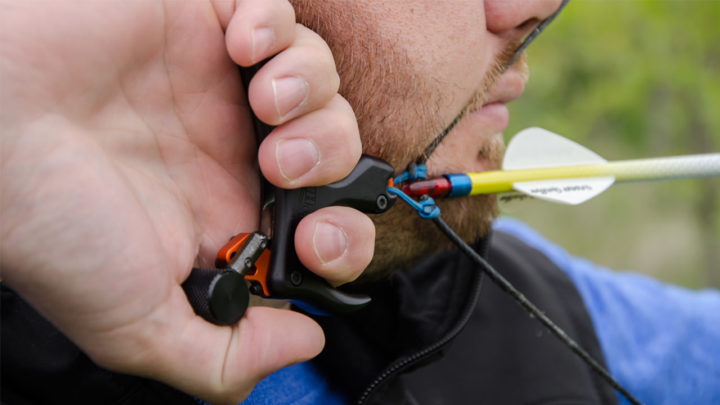
For proper execution with a thumb-trigger release the barrel should rest securely back into your thumb, almost near the palm of your hand.
You pull, tension builds, the trigger suddenly and surprisingly trips, the arrow flies where you were aiming, and you now get what a properly executed shot feels like. Goodbye target panic!
Handheld vs Wrist-Strap — At Anchor
Besides the benefit of helping me overcome target panic and keep it at bay for the past few years, I love the way that a handheld, thumb-trigger release helps me anchor at full-draw with more comfort and greater consistency. Before I began using a handheld release, my anchor point used to vary wildly. Almost every few weeks I would adjust my wrist-strap release, put my thumb on different parts of my face or neck at anchor, or change the angle of my hand and wrist to try and find a comfortable and repeatable anchor point.
As soon as I began shooting with a handheld release, though, I discovered that I now had a much more defined area to work with; the interface between the side of my face and jaw could make a solid connection with the top-side of my hand. Because there are more defined points of contact (bones in the hand and face), I could easily identify these points of contact on each shot, which lead to greater consistency at anchor, and more consistent accuracy downrange.
On Your Bow, Not Your Body
The fact that a wrist-strap release is worn on your body and always immediately available to be used is great. That is, until it isn’t. A release that dangled from my wrist was always banging on my bow or treestand, getting caught in clothing (sleeves, gloves, etc.), and was generally annoying to deal with while maneuvering. The addition of a fold-back head helped some, but didn’t eliminate all of my issues.
With a handheld release, however, many of these annoyances are gone. I don’t have to wear it. It isn’t in the way when I’m changing clothes (adding or removing layers while hunting). It isn’t in the way when I reach in my pack, or climb into my treestand, or reach for my bow. My release of choice, the Scott Exxus, features a jaw that locks closed, which means that I can clip the release on my bow’s d-loop and then simply set my bow as I normally would when hunting from a treestand or ground blind. The release is there, with my bow, ready to go.
When hunting on the move — chasing elk through the Rockies, for example — I keep my release stored securely in a release pouch or hipbelt pocket on the pack that I am wearing. It is stored out of the way, but accessible in a moment’s notice when needed. The fact that the release isn’t worn on your body is mostly a benefit, but I will admit that it does open you up to losing a release easier, or fumbling to grasp for it when an unexpected encounter presents itself (neither has been a real-life problem for me).
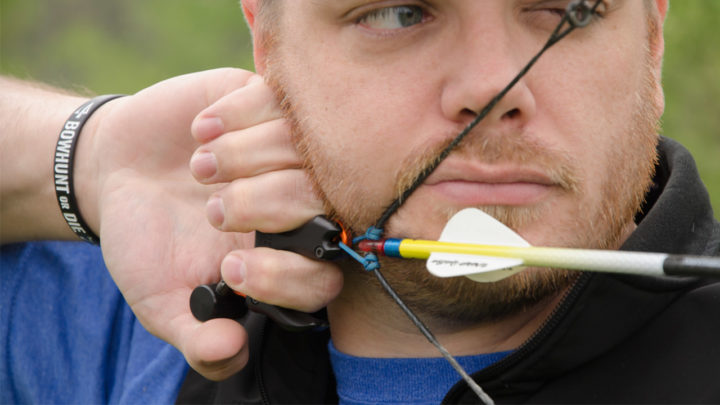
Not having your release fastened to your body throughout a hunt provides a variety of benefits, but a few drawbacks as well.
Adjusted Just For You
With a wrist-strap release, you often get what you get; sometimes you can make minor adjustments — moving the head further/closer from your hand, or making slight adjustments to travel or tension. However, with many thumb-trigger releases, you have a much greater range of adjustments that allow you to customize the release exactly how you want it. I can adjust the trigger tension with an incredibly wide variety of pull-weights; I can adjust the trigger travel (how much the trigger moves before it releases the jaw); I can adjust the trigger position, size, angle, and more. These seemingly-minor adjustments are a big deal when it comes to squeezing the most comfort, consistence, and accuracy out of your setup.
Always Right, Maybe Not
It’s now beyond obvious that I am a huge fan of thumb-trigger releases, but that doesn’t mean that I think every bow hunter should be using one. As I mentioned earlier the standard wrist-strap, index-finger releases are cheaper, simple and more readily available. The release that is right for you can only be determined by your preferences, budget, and needs.

 By
By 